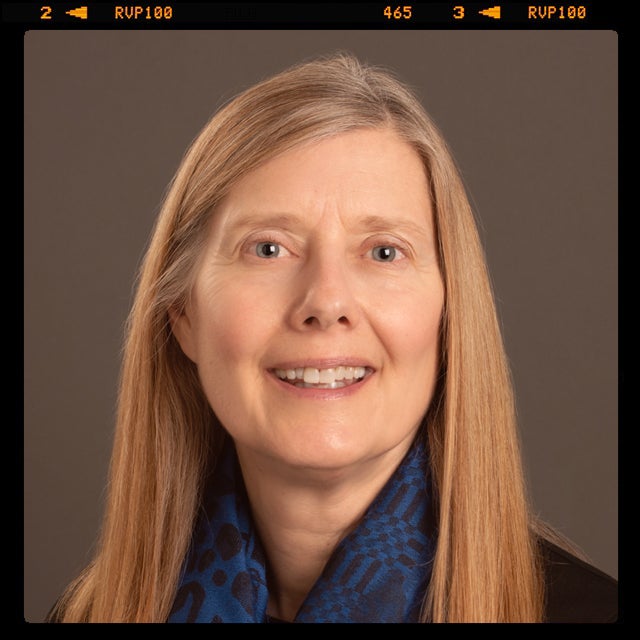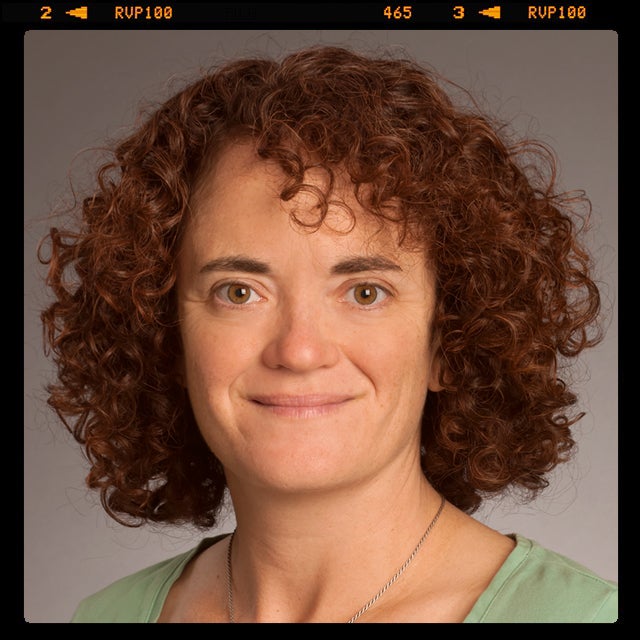
Georgann Kurtz-Shaw serves as Assistant Professor and Head of Instruction and Research Services for Albertsons Library at Boise State University. Her scholarly interests include information literacy instruction and late-nineteenth-century American periodicals. She first worked with incarcerated students at a federal prison in southern Illinois.

Sara Winstead Fry is Professor of Education in the Department of Curriculum, Instruction, and Foundational Studies. Her scholarly interests include service-learning and citizenship education. She teaches courses in the Human Rights Certificate program and University Foundations.

Experiences Teaching Students Who Are Incarcerated
In 2019 just under 81% of Idaho high school students graduated in four years, below the national average of 86%. Only 46% of those high school graduates went straight to college. Since the COVID-19 pandemic, Idaho’s “go-on rate” has dropped further; only 37% of 2021 high school graduates entered college the following fall. While enrollment in Idaho’s state colleges and universities has rebounded more quickly than much of the nation, that initial growth has come primarily from out-of-state students.
In fact, for the first time in its history, in fall 2021 Boise State enrolled fewer first-time students from Idaho than from outside the state. With these numbers, it’s not surprising that the University’s Blueprint for Success 2021-2026 pledges to “expand educational access for all Idahoans through improved outreach, communication, financial aid, philanthropy, online resources and education.”
As part of its focus on growing Idaho’s higher education resident population, Boise State has added initiatives like the Community Impact Program in recent years. Designed in collaboration with local communities, this program brings higher education to some of Idaho’s rural populations. While Boise State may not have envisioned incarcerated Idahoans as part of their initiative to reach out to the state’s residents more broadly, bringing higher education to residents of local Treasure Valley correctional institutions clearly aligns with this goal.
In the spring of 2020, Boise State’s Division of Extended Studies piloted a program to bring post-secondary education to Idaho’s prison population. Professor Emeritus Todd Shallat taught a one-credit history course for eight students at the Idaho Department of Corrections (IDOC) medium security prison in Kuna, Idaho. Though the start of the pandemic complicated delivery of that course and subsequent offerings, seven of the eight students completed it to earn Boise State academic credit.
As part of the collaboration with IDOC, in fall 2021 Sara Fry offered a one-credit course titled Introduction to Human Rights to adult learners at the IDOC Kuna facility. The course was inspired by content from the Marilyn Shuler Human Rights Initiative and students who Sara met while teaching courses in the program. Many had family members with felony convictions, and their stories and interest in contributing to the reduction of recidivism inspired Sara to offer a course to students who are in prison. Due to COVID-19, the course was conducted via Zoom. Student tuition fees for both these courses were paid by a private donor.
Because inmates do not have access to library databases or the internet for research, Sara turned to Georgann Kurtz-Shaw, Head of Instruction and Research Services at Albertsons Library at Boise State University, for support. Georgann provided one-on-one research support to students in prison (discussed in more detail below) so they could obtain sources that would allow them to learn more about human rights issues that interest them and prepare a research-based final writing project.
The vast majority of people in Idaho’s prisons will likely one day return to be citizens in our communities. Over the last decade an average of 625,075 incarcerated individuals were released annually in the U.S. In Idaho the average was 4,704 each year.1 High national and Idaho-specific recidivism rates suggest that we are not doing enough to prepare these incarcerated individuals for their return to society. Approximately one-third of Idahoans released to the community recidivate.
Given evidence that inmates who participate “in correctional education programs are 32% less likely to recidivate when compared with inmates who did not participate in correctional education programs” and 12% more likely to secure postrelease employment,2 Boise State’s ongoing work to develop education opportunities for Idaho’s prison population is a step in the right direction.
With the possibilities of expanded course offerings and a pathway to a degree for students who are in prison, co-authors Georgann and Sara offer insights about the teaching and learning process that led them to be inspired by their non-traditional students and the thoughtfulness and potential of those students as learners. Some students continued to engage in course content months after the Intro to Human Rights course concluded by revising their final projects for potential publication here in The Blue Review.
Teaching Remotely in a Prison
Sara explained that her approach to designing and teaching the Introduction to Human Rights course was based on her hope for a degree program for inmates:
I put skill development at the forefront of the course to help students develop their confidence that they are college ready. I had a hunch that many would have negative memories and experiences in K-12 education, and that proved to be accurate. Emphasizing reading, discussion, and writing skills was important.
Another priority for me was a final project that would be a stepping stone to further engagement in learning, human rights, and possibly contributing to an organization that addresses an issue they care about. Since social and family support and a sense of belonging are associated with lower recidivism, I wanted the final project to support students in building connections that could help them successfully re-enter society when they are eligible for parole.
Since I have personally experienced benefits such as friendships, professional connections, and the “helper’s high” that comes with my own contributions to Boise-area organizations that promote human rights, I designed a final project option that would allow students to begin the process of connecting with an organization. I invited students to learn about an issue they care about, study an organization that addresses the issue, and identify a way they could contribute to the organization’s mission. The outcome was a letter to the organization expressing their interest and proposing a contribution they can make – albeit at a distance given their residency in a prison.
Students chose a variety of issues and organizations for these projects. One student researched and proposed to Boise Mayor Lauren McLean ways to increase affordable housing options. Another student prepared a proposal to the Wassmuth Center for Human Rights for enhanced security to protect the Anne Frank Chestnut Sapling from acts of vandalism in the area around it. Student research sessions with Georgann Kurtz-Shaw were essential to the students’ success with these projects.
Supporting Students in Research When They Don’t Have Internet Access
Georgann brought prior experience working with students in a prison setting to her collaboration with Sara and the students. She explained:
Having recently moved to Boise from a small town in southern Illinois where nearly 18% of the town’s population resided at the local federal prison, I knew the significant challenges for the incarcerated to access information. In my role as a university librarian, I had the opportunity to visit the prison to support students’ research in courses my university was offering there. Based on that experience, I believe that if Boise State offers undergraduate courses at Idaho correctional facilities, those students need the support of Albertsons Library–perhaps even more than other students.
Before reading that last sentence as an exaggeration, try to imagine what it would be like if educators asked campus-based students to complete research projects and write papers without access to information resources to support their work–no laptops, no smart phones, no Google, no JSTOR. Good research rests on good information. Without the internet, library databases, and book collections crafted to support the curriculum, what educators can expect and ask of students must change dramatically.
So when Professor Sara Fry emailed about the possibility of providing research support to students in her Intro to Human Rights course, I was excited about the opportunity and challenge. Deeply embedded in any librarian’s DNA is the belief that information should be freely available to all, no matter who they are or where they live. I was excited to help bridge the information gap for these new Boise State students. Like Sara I wanted to help them discover their capacity for college-level work.
Because my role was to facilitate the students’ access to resources to support their final projects, I joined the course at the midway point. With the help of IDOC educator, Wayne “Kim” Wardwell, I met the fifteen students one-on-one via Zoom sessions. As I listened to each of them talk about their research project, I sensed their genuine interest in discovering and in doing something worthwhile through their work.
More than once, I heard statements such as: “I just want to understand better” in relation to topics like refugees, immigration, and toxic masculinity, “I want to know more so I can support them” referring to their LGBTQ child or their family healing from the effects of their drug abuse, and “I want to change this” as we looked for programs addressing the need for more affordable housing in Idaho or ways to deter vandalism around the Idaho Anne Frank Human Rights Memorial in Boise.
Faculty in any discipline would covet this level of eagerness and curiosity for their undergraduate students pursuing a course research project. I saw in these students enthusiastic engagement with their topics and the possibility that their work might contribute in some way to greater understanding of the issue and more positive outcomes.
Possibilities for Post-Conviction Success
Georgann’s and Sara’s positive experience with students who are in prison illustrates the potential for learning and inquiry this population of learners holds. While Idaho’s higher education for inmates is still in nascent stages, evidence from other states with successful trajectories for those who were formerly incarcerated gives reason to hope for success. For example, Dr. Stanley Andrisse, an assistant professor at Howard University’s School of Medicine who conducts cutting edge research about insulin resistance and type 2 diabetes, experienced the transformative impact of higher education while serving a prison sentence. Dr. Andrisse stated,
I saw myself as a criminal and I didn’t see myself getting out of the cycle of what prison is. . . I read my first scientific article when I was incarcerated. Education was literally this rehabilitative thing for me and has helped propel me to where I am today.
While the stories of Boise State’s students who are in prison are still being written, Sara’s and Georgann’s positive experiences with what incarcerated students are capable of achieving illustrates that Idaho’s prison population has untapped potential.
Notes:
- These statistics were drawn from the 2011-2020 Prisoners in [year] publications issued annually by the Bureau of Justice Statistics.
- These details are taken from a meta-analysis of 57 studies published or released between January 1, 1980, and December 31, 2017, giving the authors depth and breadth for their conclusion. See Robert Bozick, Jennifer Steele, Lois Davis, & Susan Turner (2018). Does providing inmates with education improve postrelease outcomes? A meta-analysis of correctional education programs in the United States.